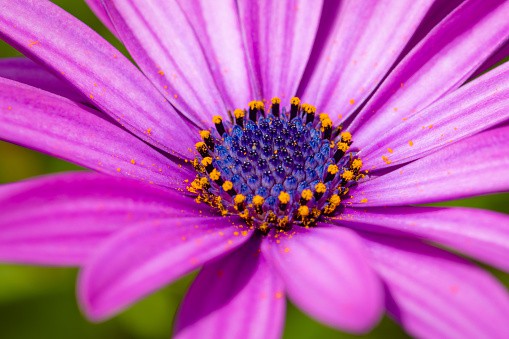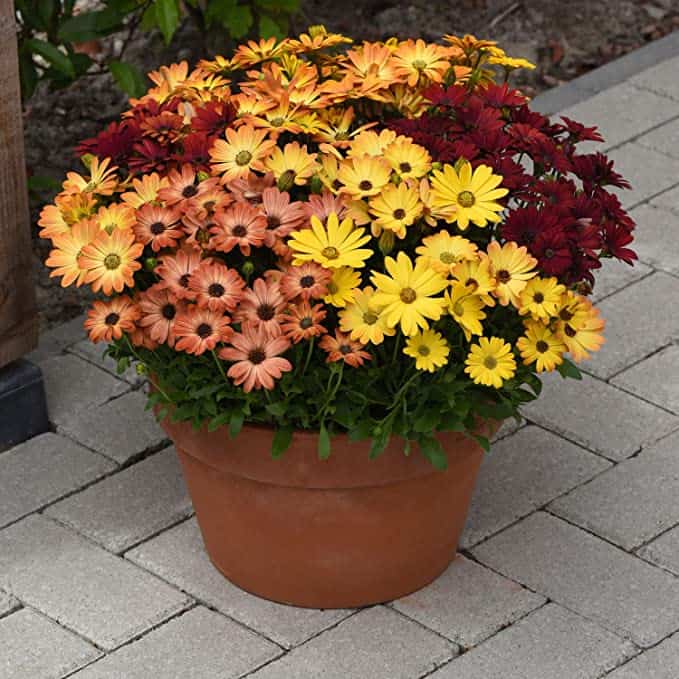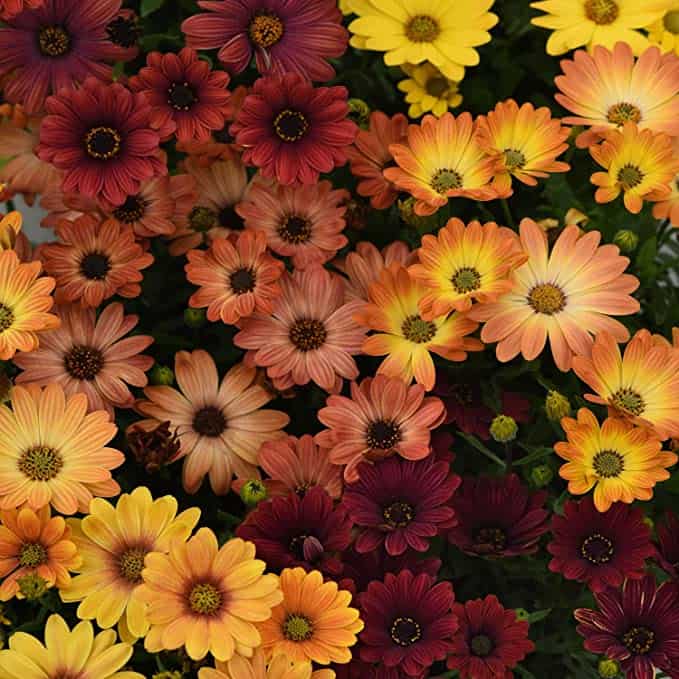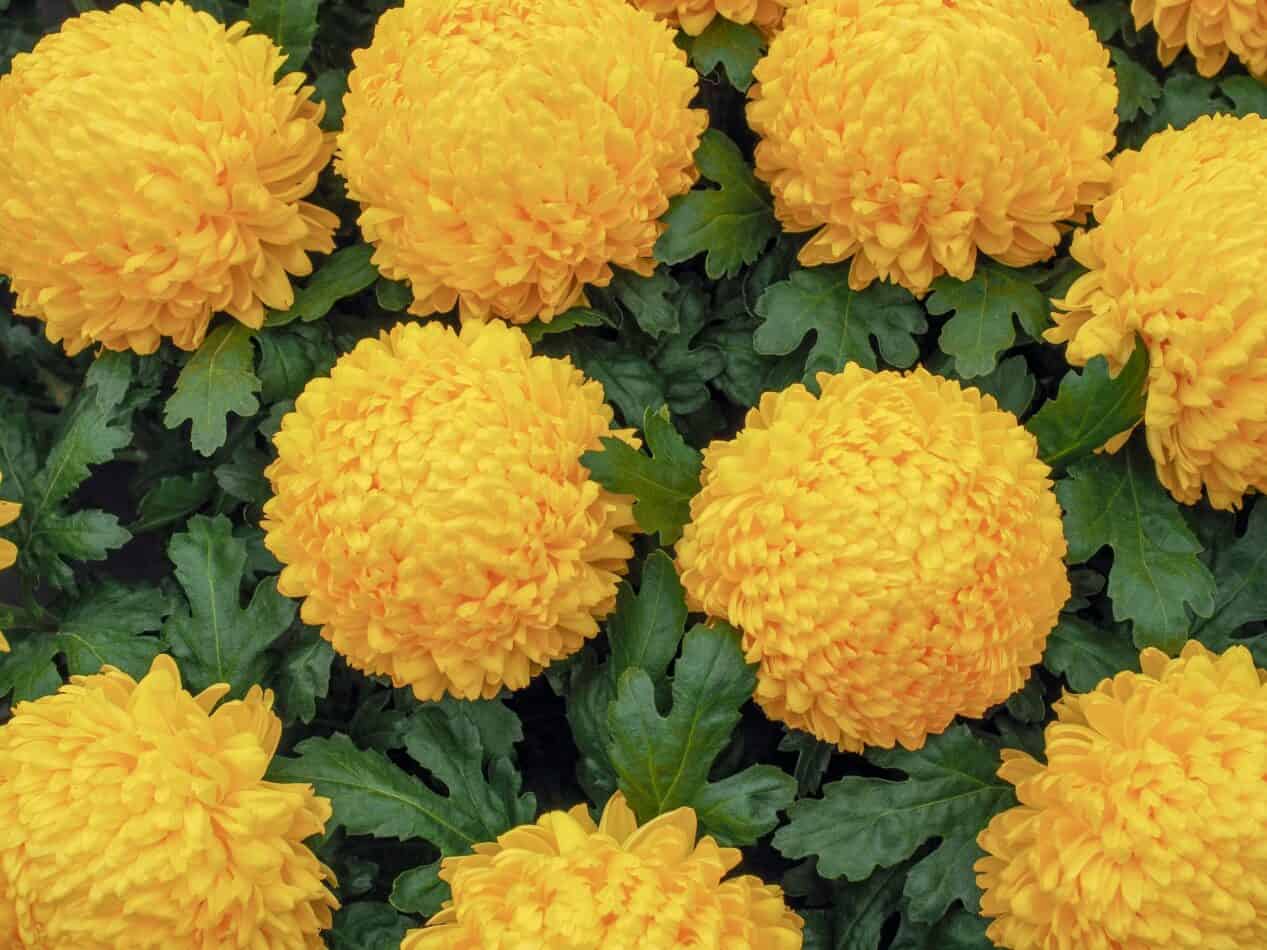Osteospermum is a genus of flowering plants from the daisy family, Asteraceae. The name comes from the Latin terms osteon, meaning “bone”, and sperma, meaning “seed”. There are around 70 species of Osteospermum and an increasing number of cultivars, with the Royal Horticultural Society (RHS) lists about 900 varieties. Most of their flowers feature a single stem with a central disc that is surrounded by bright petals. Depending on what zone you live in, different species can be annuals, biennials, or perennials.
How to Plant
When selecting a spot for your African Daisy and Osteospermum plants, make sure you choose an area with plenty of sunshine up to 10 hours per day in the summertime. You should also pick a spot with well-drained soil, and during the springtime, you can prepare your soil by adding a layer of compost for extra nutrients. When planting, make sure to dig a hole that is twice as wide and twice as deep as the plant’s root ball. Position the plant in the ground and make sure to fill the hole with soil and tap it down firmly but gently to avoid any air pockets. Water immediately.
Meaning and Symbolism
The African Daisy or Osteospermum symbolize cheerfulness, beauty, flexibility, acceptance of changes, and new beginnings. They possess the remarkable ability to take whatever comes their way with grace and cheerful acceptance. In the language of flowers, Osteospermums represent love, joy, and new life.
History, Mythology, and Religious Significance
The African Daisy or Osteospermum have been used in many different religions and ancient cultures. The ancient Egyptians carried these flowers as a sign of joy, while the Greeks adorned them with jewels. In Christianity, the Osteospermum symbolize the eternity of life and the resurrection of Jesus. In Hinduism, the African Daisy is associated with the gods and goddesses and serves as an offering during religious ceremonies. In China, Osteospermums are a symbol of good luck.
Flower Varieties and Their Defining Characteristics
The two most popular varieties of Osteospermum are the African Daisy and the Osteospermum ecklonis. The African Daisy (Osteospermum jucundum) is an evergreen, drought-tolerant plant with single, vibrant daisy-like flowers up to 2.5 cm in width and sturdy, velvety leaves. Its blooms come in yellow, pink, white, and purple, and it is often found growing in hardy climates.
The Osteospermum ecklonis (Blue-Eyed Daisy) is a tall, semi-woody perennial herb with a bushy growth habit. The flowers are blue with a white center and deeply divided leaves. This plant typically reaches around 1.5 meters in height and 2.5 meters in width and has a long flowering period, from late spring to late autumn.
Buy African Daisies on Amazon>>
How to Pot and Repot
When potting African Daisy and Osteospermum, use a high-quality potting soil and make sure the pot has drainage holes in the bottom. Once the pot is filled, it’s time to add your African Daisy or Osteospermum. Position the plant so the brighter side of the plant is facing outward, and then firmly press the soil around the stem. Finally, water until it drains from the bottom of the pot. Taking care to water regularly — African Daisy and Osteospermum thrive in moist soil, but not to the point where the roots sit in water.
To repot, simply tip theAfrican Daisy or Osteospermum out of the pot and loosen any tight roots. You can then move to a larger pot with fresh potting soil. Make sure to water the plant once it’s repotted and continue to monitor the soil moisture.
Buy African Daisies on Amazon>>
How to Prune
Live pruning is one of the necessary tasks of taking care of African Daisy and Osteospermum plants. Live pruning should be done during dry periods in the spring, before new growth appears. Begin by removing dead flowers and pruning back any stems that look weak or discolored.
When pruning, always use sterile tools and make sure to wipe them down with rubbing alcohol or a solution of water and bleach before and after use. Cut the stems to the desired length, and make sure to avoid cutting too much; the goal is to remove unhealthy and dead parts of the plant while leaving enough foliage to provide a healthy look. When pruning, it’s also important to account for the African Daisy or Osteospermum’s growth pattern so that you don’t end up with fundamentally unbalanced plants.
What we love from Amazon this week
Buy these wonderful flowers directly from Amazon:

















